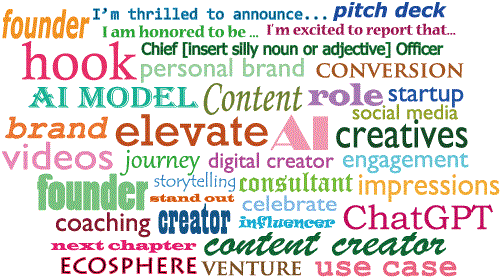Years ago I was under the impression that LinkedIn was a platform where people searching for employment could interact with potential employers. Silly me to believe that the platform would not evolve into what it is today.

Today, the platform is awash with self-congratulatory posts from people who are likely desperate to find their next “role.” We used to call them jobs, of course. This makes me wonder just it was when a job became a role. I guess the term job needed to be “elevated,” and I think it was some time after problems became issues and considerably after the personnel department was rebirthed to HR. But I digress.
Another annoyance that LinkedIn provides is the countless self-styled coaches, many selling advice on how to “succeed on LinkedIn.” My guess is that many are themselves desperate to succeed and are working the aisles of other desperate LinkedIn users.
Then there are the AI evangelicals, promoting collections of computer code running in silicon-based entities as the answer to all the problems…uh, issues…faced by carbon-based entities.
Quite central to most of these vapid posts is the use of a blinding variety of buzzwords and buzzphrases, devoid of any identifiable substance, but trendy nonetheless.
It appears that substance takes a backseat to fluff on LinkedIn, which is rapidly coming to rival all other social media platforms, although perhaps without the same level of criminal activity (yet, anyway), and no single identifiable Trumpic sycophant at the helm.
